Tracking the Prince: Skibbereen
/Refuge for settlers, home for fishermen, famed as of one of the worst affected by The Great Famine, Skibbereen survives and thrives in its colorful, splendid way.
Read MoreInternational Award-Winning Author
Refuge for settlers, home for fishermen, famed as of one of the worst affected by The Great Famine, Skibbereen survives and thrives in its colorful, splendid way.
Read MorePart 6 in a series featuring sites I visited in Ireland while researching my second novel, The Prince of Glencurragh. See previous posts listed at the end.
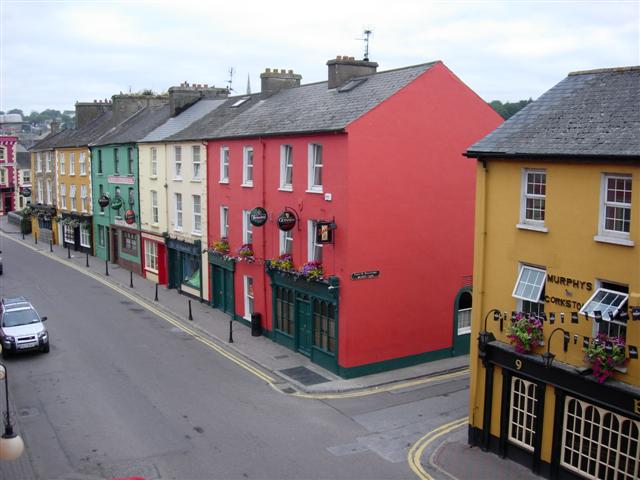
My research for The Prince of Glencurragh truly gained momentum when I visited Bandon in County Cork. Here I saw the place where my story began, and realized my reconnection with an old friend was the key that would allow the story to unfold.
Known as the gateway to West Cork, the city of Bandon lies 27 km (not quite 17 miles) west of Cork City. Established in 1604 as part of King James I’s Munster Plantation, it was a planned settlement English Protestants in Ireland. The famous stone bridge dates back at least to 1594, connecting people on either side of the Bandon River to facilitate trade. A timber bridge had existed even earlier, built by the O’Mahony (Oh-MAY-hon-ee) clan in 14th century.
When Richard Boyle, the first Earl of Cork, acquired the lease for all the properties of the town, he began a five-year project to enclose 27 acres within a wall nine feet thick and from 30 to 50 feet high in some places. On the heels of the Desmond Rebellions, this was intended to protect the peaceful settlers within against the wild Irish without.
Protection was needed against the unrest the settlement itself had created. Bandon lands had belonged to the O’Mahony and McCarthy clans, and the displacement left Irish families homeless and their sons without inheritance, sowing seeds for an even greater rebellion than the Desmonds could muster.
For the story in The Prince of Glencurragh, Bandon’s wall is critical, because certain local laws were enforced by a sheriff within the town’s walls, but did not extend beyond them. When the would-be “prince” Faolán Burke abducts his heiress from a rectory situated outside the town walls, technically he has broken no laws.
In preparation for my travels, my research uncovered a near-perfect model for this rectory, the Kilcolmen Rectory just east of where the walls of Bandon would have reached. To my surprise and delight, my dear friends and guides Eddie and Teresa actually live in Bandon (I had thought they still lived in Templemore).
I met Eddie when I was 19 or 20, visiting Ireland for a summer study program, and had the privilege of staying with his family in Skibbereen for a few days. We had not seen each other in decades, and so the reconnecting was gratifying and emotional.
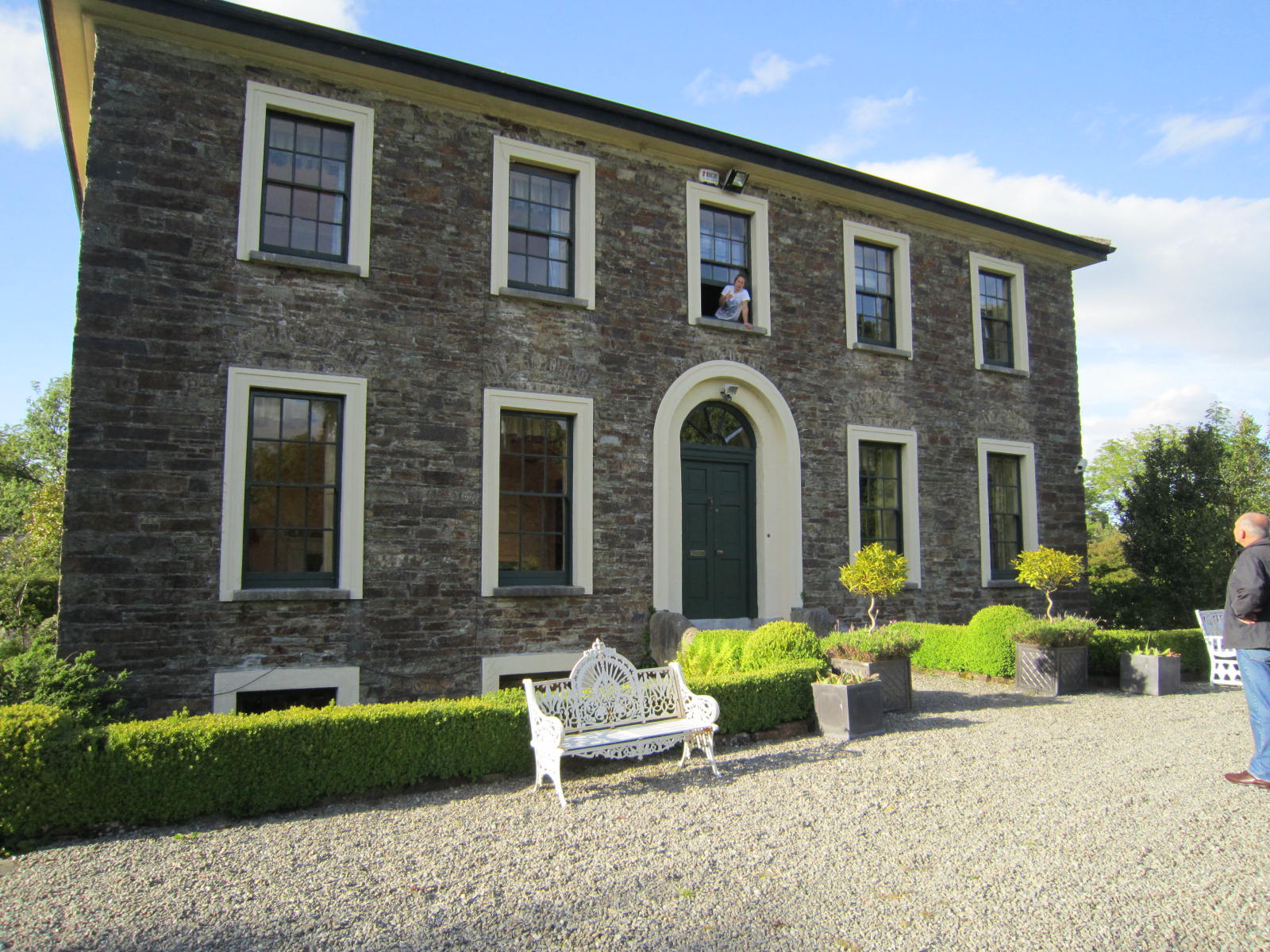 Eddie knew of the rectory and was able to take me straight there. Though it is now a private home, Eddie chatted with the resident—she was leaning out of the upstairs bathroom window where she’d been bathing her children—while I looked about the house and grounds. We did not go inside, but Eddie sent me some interior photos he happened upon when the house went on the real estate market months later.
Eddie knew of the rectory and was able to take me straight there. Though it is now a private home, Eddie chatted with the resident—she was leaning out of the upstairs bathroom window where she’d been bathing her children—while I looked about the house and grounds. We did not go inside, but Eddie sent me some interior photos he happened upon when the house went on the real estate market months later.
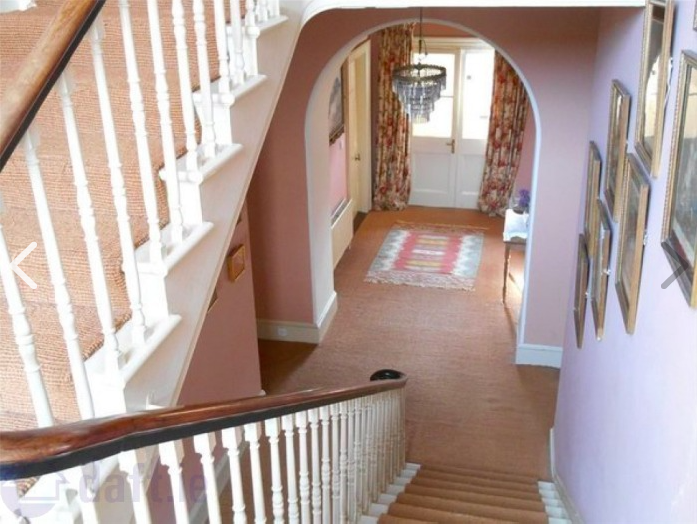 This rectory is much larger and finer than the one I had imagined, but served quite well to give me an authentic feel for the place. The front door is opposite the stairs, and on either side are doorways to the parlor and the dining room. I loved the enormous windows of the place, and the high ceilings. The bedroom is where the character Vivienne would have pushed her bed beneath a window to wait for St. Agnes to reveal the image of the man she would marry. The road outside would have been a dirt carriage path instead of a nice, clean paved drive.
This rectory is much larger and finer than the one I had imagined, but served quite well to give me an authentic feel for the place. The front door is opposite the stairs, and on either side are doorways to the parlor and the dining room. I loved the enormous windows of the place, and the high ceilings. The bedroom is where the character Vivienne would have pushed her bed beneath a window to wait for St. Agnes to reveal the image of the man she would marry. The road outside would have been a dirt carriage path instead of a nice, clean paved drive.
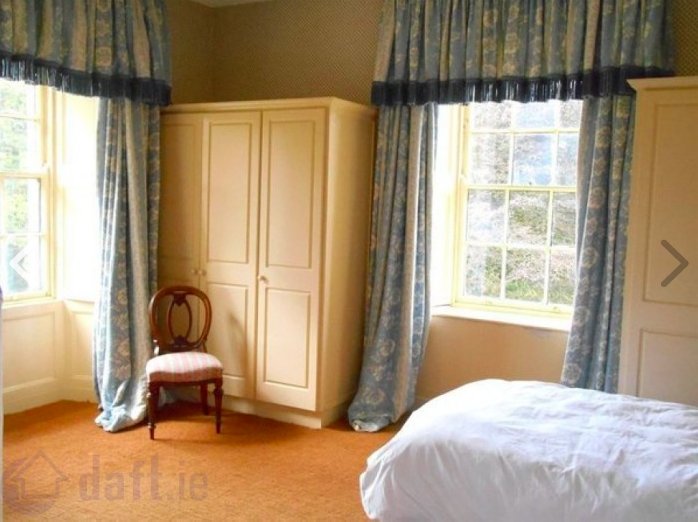 Eddie later showed me that Bandon’s town walls are mostly invisible now but for some crumbling remnants. Still, the wall sets the town apart and Bandon is a member of the Irish Walled Towns Network.
Eddie later showed me that Bandon’s town walls are mostly invisible now but for some crumbling remnants. Still, the wall sets the town apart and Bandon is a member of the Irish Walled Towns Network.
Upon seeing these things, the story became real to me and I could tell it with sincerity. But the truth is I would never have found or seen the places I was looking for without Eddie and Teresa. It is one thing to look at a map and draw circles and lines, and yet another to actually find your way around a mostly unmarked and unfamiliar region. They took me everywhere I wanted to go, for they knew each place already, and even more than that, they had personal history with some of them, a love of exploration, and an often unspoken but clear reverence for the land and its history.
They showed me a ruin not on my list, but beautiful and fascinating: Castle Bernard. Where once there had been a medieval castle belonging to the O’Mahonys, in 1788 the first earl of Bandon, Francis Bernard, built a beautiful mansion with tall windows and soaring castellated towers.
By the time it was inhabited by the 4th earl, James Francis Bernard, a new and modern rising came from the IRA. In June 1921, while the earl hid in the cellar, IRA soldiers set fire to the castle and captured the earl as he tried to escape. Now mostly swallowed up by the woods and vines, the magnificence and inaccessibility of the ruin spur the imagination.
From Bandon we would travel for three spectacular days to uncover the rest of Faolán Burke’s trail.
As a side note, my friends in the Pacific Northwest might like to know that Bandon has a twin city agreement with Bandon, Oregon. In 1873, Lord George Bennet founded the city and named it after his hometown in Ireland. Bennet is known for introducing the lovely-flowering but highly troublesome gorse to the American landscape.
Thanks to: Irish Walled Town Network, Heritage Bridges of County Cork (Cork County Council), Castles.nl, Wikipedia and other sources.
Part 1 - Kanturk Castle
Part 2 - Rock of Cashel
Part 3 - Barryscourt
Part 4 - Ormonde Castle
Part 5 - Lismore Castle
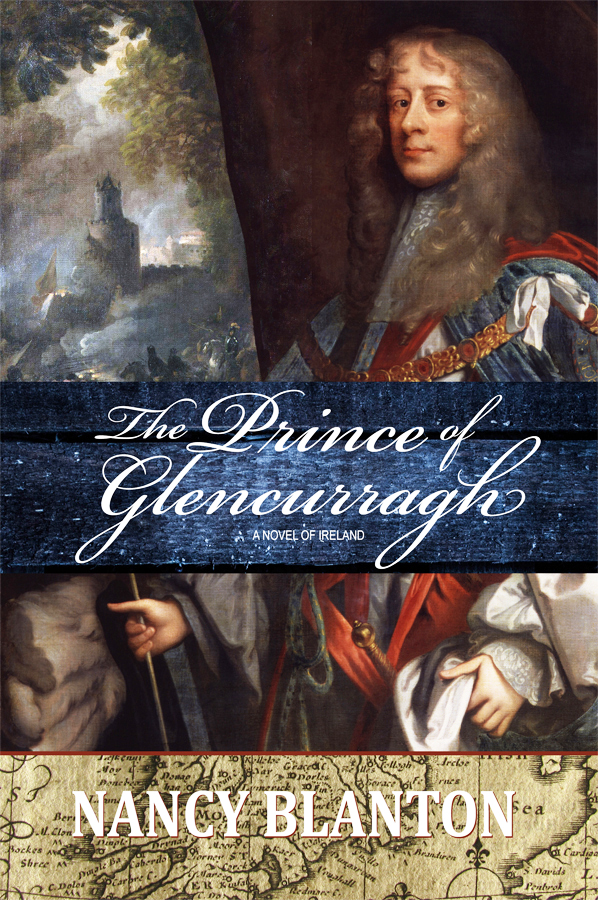 An heiress, a castle, a fortune: what could go wrong?
An heiress, a castle, a fortune: what could go wrong?The Prince of Glencurragh is available in ebook, soft cover and hard cover from online booksellers.
https://books2read.com/u/4N1Rj6
http://www.amazon.com/Prince-Glencurragh-Novel-Ireland-ebook/dp/B01GQPYQDY/
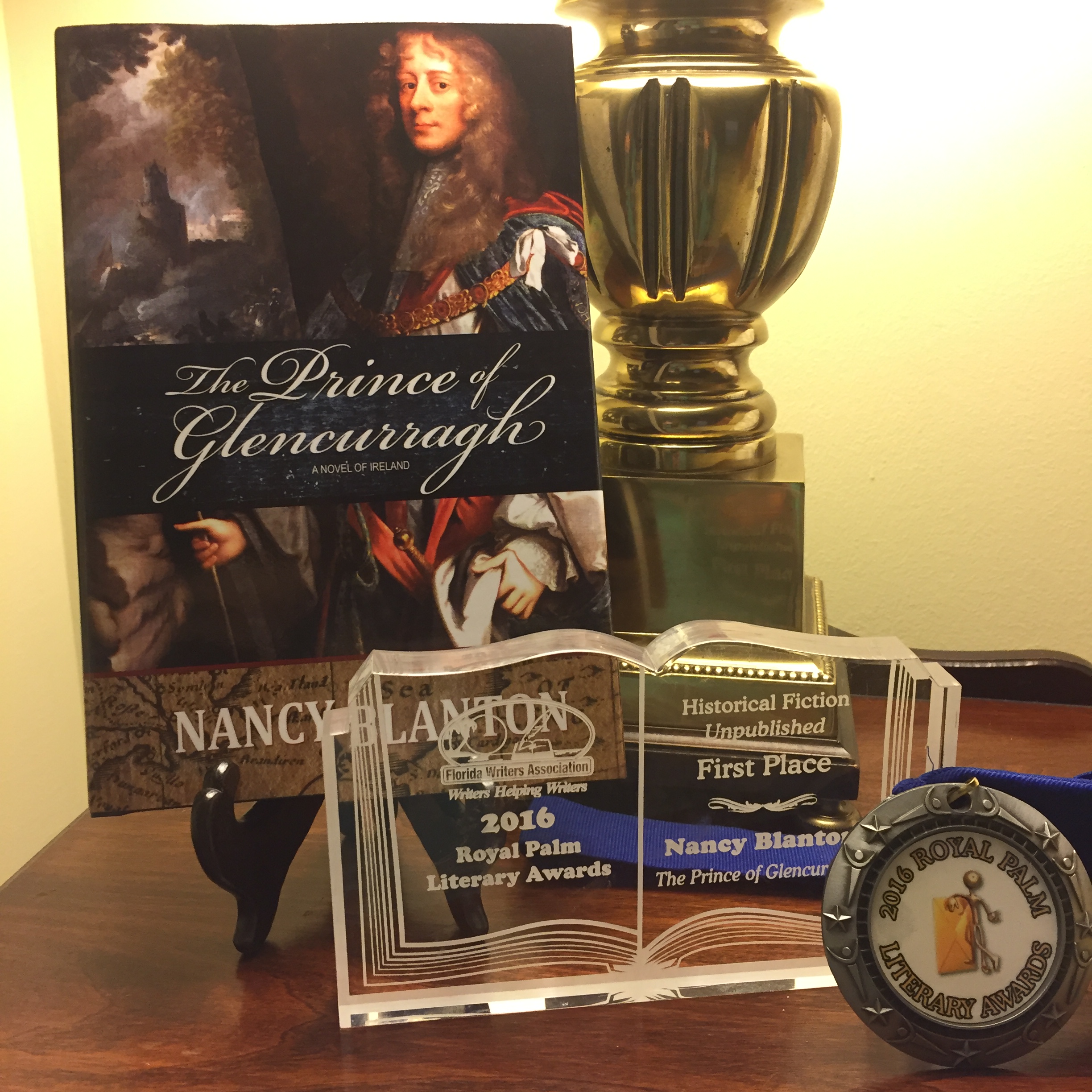 On October 22, the Florida Writers Association bestowed the coveted Royal Palm Literary Award on my second novel, The Prince of Glencurragh. This is an enormous honor and a great thrill. I worked harder on this book than anything before, loved the story and characters, and I’m gratified that the judges loved it, too: first place for historical fiction, and first runner up for book of the year across all genres in its category.
So here’s the backstory: why I wrote it, what it’s about, and some themes that I hope will come through for readers.
On October 22, the Florida Writers Association bestowed the coveted Royal Palm Literary Award on my second novel, The Prince of Glencurragh. This is an enormous honor and a great thrill. I worked harder on this book than anything before, loved the story and characters, and I’m gratified that the judges loved it, too: first place for historical fiction, and first runner up for book of the year across all genres in its category.
So here’s the backstory: why I wrote it, what it’s about, and some themes that I hope will come through for readers.
This book is actually the prequel to my first novel, Sharavogue (also a Royal Palm award winner in 2014). It is about that protagonist’s father, Faolán Burke. I had originally intended to write the sequel, but at the time several readers urged me to tell what had happened before, and how Elvy Burke came to be in her troubled situation. So I focused instead on 1634, the year Elvy was born, and found the time rich with change, struggle, and growing discontent that would lead to the great Irish rebellion of 1641.
About the title
The Prince refers to the protagonist in the story, Faolán Burke, who aspires to be a leader among his people, and to build the castle that was his father’s dream. The gentleman on the cover is not a prince; he was James Butler, the 12th Earl of Ormonde, and later the first Duke of Ormonde, who embodied all the princely attributes of his day – he is the ideal, what Faolán would hope to become.
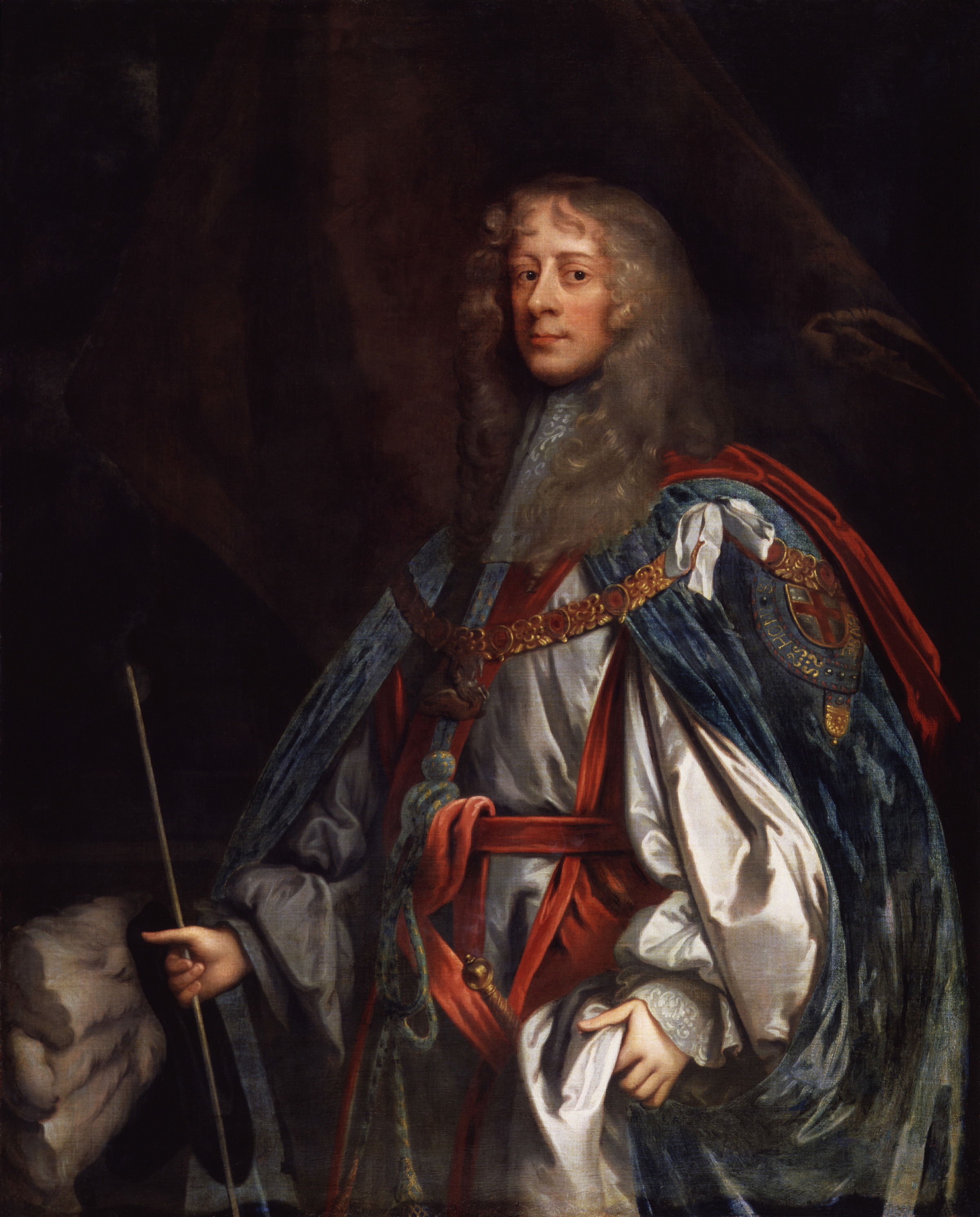
Ormonde was one of the largest landholders in Ireland at the time, and land was power. He ascended to the earldom at just 24 years of age, when his grandfather died, because the first heir, James’s father, had been lost at sea. This ceremonial portrait was a great inspiration to me: I was fascinated by the pride and strength in his face, the long golden curls, and the magnificent robes. He was admired by almost everyone in his day; he was a statesman of his time.
Biographer C.V. Wedgwood describes James Butler as a “high-hearted” nobleman: “Handsome, intelligent and valiant, he was also to the very core of his being a man of honor: loyal, chivalrous and just.”
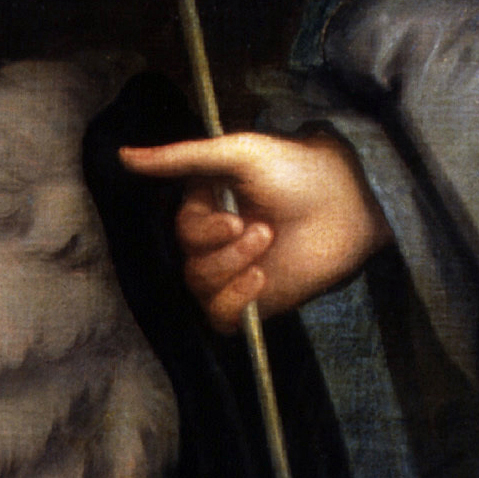 One little quirk you might notice on the cover, if you look at Ormonde’s right hand holding the lance. He appears to be missing a finger! In later portraits the finger exists, so this must be a mistake (or perhaps intentional) by the artist.
Glencurragh comes from a residential section of Skibbereen, a town in southwest County Cork (in the book I use the old spelling, Skebreen). When I visited there last year, my friend of many years helped me find the most likely place where my fictitious castle might have been located. Glencurragh means “a place for boats,” and the castle would’ve protected the commerce up and down the River Ilen. At one point in time there were three castles along the river at Skibbereen, but all have crumbled away.
One little quirk you might notice on the cover, if you look at Ormonde’s right hand holding the lance. He appears to be missing a finger! In later portraits the finger exists, so this must be a mistake (or perhaps intentional) by the artist.
Glencurragh comes from a residential section of Skibbereen, a town in southwest County Cork (in the book I use the old spelling, Skebreen). When I visited there last year, my friend of many years helped me find the most likely place where my fictitious castle might have been located. Glencurragh means “a place for boats,” and the castle would’ve protected the commerce up and down the River Ilen. At one point in time there were three castles along the river at Skibbereen, but all have crumbled away.
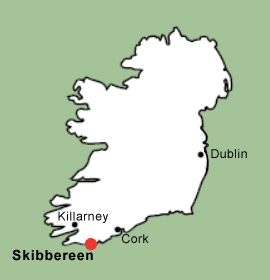 It’s because of my affection for this friend and his family that both novels are set, at least in part, in their beautiful hometown, Skibbereen.
It’s because of my affection for this friend and his family that both novels are set, at least in part, in their beautiful hometown, Skibbereen.
So what’s the story about?
It’s about a young man chasing down a dream in the worst of times. Faolán Burke, son of a famous Irish warrior, is not a great catch. He should have inherited vast lands and the beautiful Castle Glencurragh. But the English lands confiscated the land, the castle of his father’s dreams was never built, and Faolán will try almost anything to make his lost heritage a reality.
In the opening scene, Faolán falls a bit short of his ideal. He’s abducting an heiress for his bride. There was no law against abduction at this time, and while I won’t say it was common, it did occur. Once abducted, women were considered soiled goods, the family could no longer negotiate a lucrative marriage settlement with a wealthy suitor, and usually would try to make the best of it with the family of the abductor.
In this case the heiress was under protection of an earl, and earls could generally exert their own law. So Faolán with his lady must run for cover until they have the protection and support of someone equal in power that can help negotiate the settlement.
But in 1634, the real world has changed. As the English plantation system spreads across the province of Munster, Irish families lose their homes to new English settlers. Lands that have been in their families for centuries now are given to English soldiers as rewards for service. Even castles, once both the bounty and protection of the strongest clans, now are vulnerable to the siege and cannon.
Moreover, knowledge and beliefs are changing. In the 17th century, Galileo and Newton founded modern science; Descartes began modern philosophy; Hobbes and John Locke started modern political theory. Science for the first time has greater influence than religion in decision-making. And people can own books. They become a symbol of wealth, and the bookshelf is invented to display them
Climatically, this was the middle of The Little Ice Age. The 1630s recorded great floods, widespread harvest failure, intense cold winters, wet and cold springs, and drought in summer.
Some scientists say even one degree of climate change can cause changes in human behavior. Faolán finds himself in the crossfire between the four most powerful—and irritable—men in Ireland, each with his own agenda.
THEMES:
Dreams: A young man trying to realize the dream of his father. Everyone has awakened from a dream so beautiful they want to hold onto it, but the longer they are awake the faster it recedes. From another perspective, many of us have seen the sacrifices our parents made and then tried to live their dream for them, only to realize later in life that it does not satisfy. We have to follow our own dreams.
Friendship: The relationship between best friends from childhood. Faolán interacts with his best friend Aengus O’Daly, who narrates the story. I am blessed to have known deep and lasting friendships of this kind that informed this story in ways I didn’t even realize until the end. I am truly grateful to my dear friends for that.
Hope. In great difficulty, when you have no power to change a circumstance that gives you pain, hope is what we rely on to get through, and it is the most human part of us.
Next: A Thorough Undoing
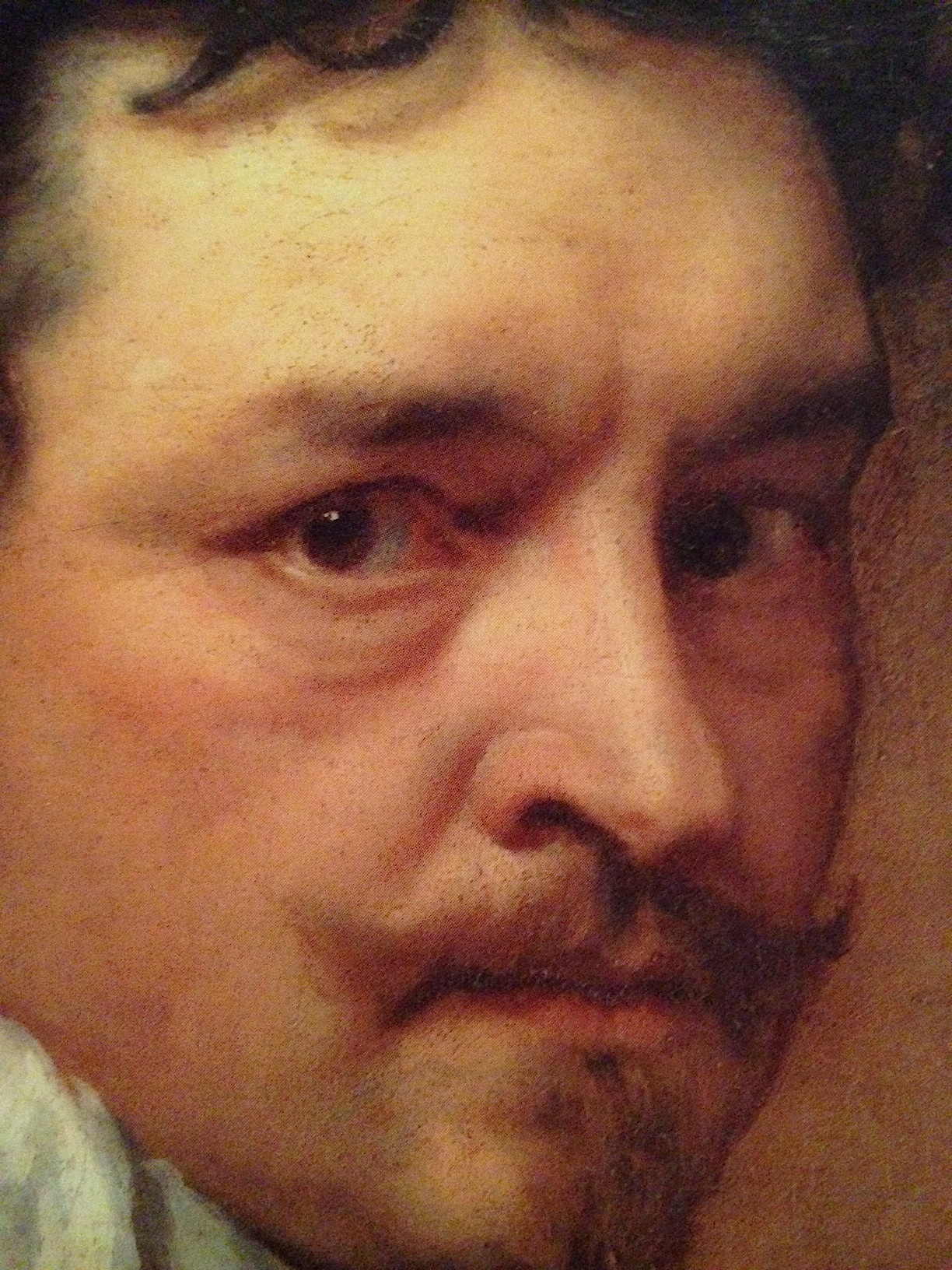 My next book picks up where this one ends, with events that occur between 1635 and 1641. Among English and Irish nobleman alike, hatred grows for the Lord Deputy of Ireland, Thomas Wentworth, and they set out to destroy him. In service of the Earl of Clanricarde, Faolán is charged to find the evidence that will strip Wentworth of his power.
My next book picks up where this one ends, with events that occur between 1635 and 1641. Among English and Irish nobleman alike, hatred grows for the Lord Deputy of Ireland, Thomas Wentworth, and they set out to destroy him. In service of the Earl of Clanricarde, Faolán is charged to find the evidence that will strip Wentworth of his power.
And now, a gentle request:
If you like what you read in The Prince of Glencurragh or any of my books, please take a moment to go online to Amazon, Goodreads, Barnes and Noble, or even Facebook, and write a quick review.
People buy books based on their friends’ recommendations, and book sales help authors pay for the editors, proofreaders and artists who help make the books the high quality you expect. Your words help authors with our words.
Thank you!
 An heiress, a castle, a fortune: what could go wrong?
An heiress, a castle, a fortune: what could go wrong?
The Prince of Glencurragh is available in ebook, soft cover and hard cover from online booksellers.
https://books2read.com/u/4N1Rj6
http://www.amazon.com/Prince-Glencurragh-Novel-Ireland-ebook/dp/B01GQPYQDY/
See all of my books and other information at
Nancy Blanton is the award-winning author of Sharavogue, a historical novel set in 17th Century Ireland during the time of Oliver Cromwell, and in the West Indies, island of Montserrat, on Irish-owned sugar plantations. She has two more historical novels underway, as well as a non-fiction book about personal branding, Brand Yourself Royally in 8 Simple Steps. She also wrote and illustrated a children's book, The Curious Adventure of Roodle Jones, and co-authored Heaven on the Half Shell, the Story of the Pacific Northwest's Love Affair with the Oyster.